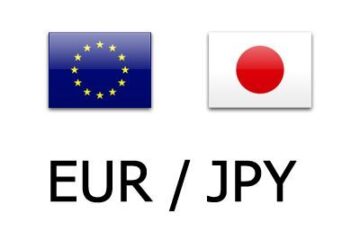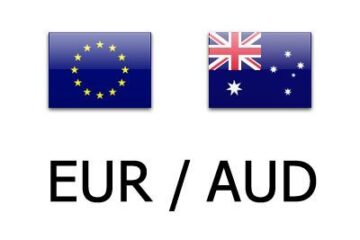Fast facts:
The costs associated with passing on can vary wildly depending on how someone prefers their death to be handled by loved ones. At the low end, direct cremation (with ashes stored at home or scattered) and an informal, backyard or outdoor memorial service can be achieved for less than $1,200.Between embalming, a casket, a burial plot, and a headstone (or a mausoleum crypt), end-of-life costs can range from around $10,000 to well over $100,000, not including funeral services.
Rising prices mean Americans are grappling with higher costs of living, but what about the cost of dying?
Inflation surged in 2021 and 2022, peaking at 9.1% year-over-year in June of 2022, and as of mid-2024, the year-over-year inflation rate remains well above the Federal Reserve’s target of 2%. The things we need to live — rent, groceries, insurance premiums, etc. — cost more than they ever have, but what about the laundry list of things we need to pay for when we die?
In a capitalist economy, nothing comes free, so you have to earn your urn, so to speak. Assuming you don’t want your loved ones to shoulder the costs of your end-of-life proceedings, it’s important to know just how much you’ll need to shell out for things like cremation, burial, caskets, headstones, funerals, and the rest of the fanfare that comes with departing this wildly expensive earthly realm.
Related: 20 of the biggest military discounts on retail, tech, travel, and more in 2024
Here’s a rundown on what you can expect to pay for the products and services that come with death (and how much some of these prices have gone up over time compared to headline inflation rates).
Cremation by the numbers
While burying bodies intact was the preferred interment method of old in much of the world, cremation has become more popular in the modern day. In 2023, the cremation rate in the U.S. was 60.5% (compared to 34.5% for traditional burials), and this number is expected to increase to 80% by 2045, according to the National Funeral Directors Association.
The human body takes about two or three hours — at temperatures of between 1400 and 1600 degrees Fahrenheit — to burn sufficiently to the point where the remaining charred and calcified bones can be crushed into the 3–8 pounds of gravelly ashes that are returned to the deceased’s loved ones.
Needless to say, this is a fairly technical process that involves specialized equipment and must be facilitated by trained, specialized personnel. As a result, it comes with a substantial price tag.
Cremation itself only costs about $400, but transportation to the facility usually costs about the same, for a total of around $800 without a container.
Asurnipal, CC-BY-SA-4.0 via Wikimedia Commons
How much does cremation cost?
According to the National Funeral Director’s Association, the median cost of a cremation alone is $400, but this is just the cremation fee. An urn costs a median of $295, and $395 is the median cost of having a loved one’s remains transported to a funeral home for cremation or other processing.
The cheapest type of all-in-one cremation service is known as direct cremation, a process through which the deceased individual is collected and transferred directly to a crematorium for processing, so the services of a funeral director are not typically required. Direct cremation prices may or may not include the cost of a container.
How much has cremation gone up in price?
Between 2021 and 2023, the median cremation fee in the U.S. went up from $368 to $400, according to the NFDA — that’s an increase of 8.8%.
According to the BLS’ inflation calculator tool, costs in general went up by 17.26% from January 2021 to December 2023, indicating that cremation prices did not rise as quickly as other prices during that period.
Caskets by the numbers
Those who opt for a traditional burial over cremation (34.5% of deceased Americans in 2023) are usually buried in a casket, a type of ornamental chest used to house the deceased in their interment.
A casket — sometimes called a coffin (although this technically refers only to six-sided interment boxes, which have become rare) — is often the most costly item purchased during the funeral process, according to the Federal Trade Commission.
Since caskets are both functional and aesthetic, their prices can vary wildly. Simple, utilitarian caskets constructed from relatively cheap materials are nowhere near as expensive as ornate, decorative caskets made from high-end materials.
Related: 20 cities & 15 states with the highest minimum wages in 2024
How much does a casket cost?
According to the Federal Trade Commision, caskets cost a little more than $2,000 on average when purchased from a funeral home. The NFDA pegs the median metal casket price a bit higher at $2,500.
Cheaper caskets in the $700–$1,200 range are available on the internet, but hefty shipping costs can easily eat into the savings that come with ordering a casket online. High-end, luxury caskets — sometimes made from mahogany, copper, or brass — can easily cost around $10,000 for those who are so inclined.
How much have caskets gone up in price?
Interestingly, according to the NFDA, the median price of a metal casket didn’t change from 2021 to 2023, whereas the prices of goods and services in general rose by about 17.26% from the beginning of 2021 to the end of 2023.
Interment options by the numbers
Interment real estate is one of the most variable costs on the end-of-life expense checklist.
Cremated remains can be kept at home or scattered outdoors, usually for free, but they can also be buried at a cemetery or interred at a columbarium (the equivalent of a mausoleum but for cremated remains).
If the deceased is embalmed, on the other hand, in-ground burial plots and above-ground mausoleum crypts are by far the most common options, but both of these can come with price tags apt to make the living shudder and the departed turn in their graves. Additionally, the embalming process itself usually comes with a price tag of $800 or more.
Here’s a breakdown of what you might expect to pay for each of these options.
How much does a burial plot cost?
In the U.S., the average cost of a single burial plot in a cemetery was $3,581 in 2023, according to PerfectGoodbyes. This number is based on a sample of 26,714 cemeteries in more than 1,300 U.S. cities, but the actual cost can vary significantly based on location and even between different cemeteries in the same city or state.
Cemeteries in Alaska and North Dakota offer the cheapest burial plots, with average prices of $775 and $983, respectively, while cemeteries in California and New York are the most expensive, with average plot prices of $7,052 and $6,742.
How much does a mausoleum crypt cost?
Mausoleums broadly fall into two categories — family/private and community/public.
The former sort is very expensive, as it is built to order and designed to house the caskets of two or more related individuals only, so the land it occupies within a cemetery and the materials and labor used to construct it all add to the price tag. The latter is cheaper, as one pays for a single crypt within a larger, already-built mausoleum structure in which many caskets are housed.
According to Memorialplanning.com, the average price for a single crypt in a public mausoleum is around $4,663. Dignity Memorial provides a similar figure ($4,000–$5,000) for a single crypt in an outdoor mausoleum but states that a similar slot in an indoor facility usually costs around $7,000 to $8,000 on the lower end, making it around twice as expensive as the average in-ground burial plot in the United States.
Private mausoleums are notably more expensive. A standalone, two-person outdoor mausoleum (not a building with an inside and outside — just an above-ground stone construction featuring two crypts) can range from $50,000 to $125,000 in price. Upgrade to a walk-in mausoleum building with space for more family members, and you’re looking at a range of $250,000 to over $3 million depending on size, crypt capacity, building materials, and customizations.
A columbarium is like a mausoleum but for cremated remains. A columbarium “niche” (essentially an urn cubby) can range inprice from about $300 to $2,800.
Arlington National Cemetery; public domain via Flickr
How much does a columbarium (cinerarium) niche cost?
If one’s remains are cremated and stored in an urn or similar container, they can be stored in a columbarium niche (the cremation equivalent of a mausoleum crypt), usually for a lower price, as the amount of space required per person is significantly smaller.
The price of a nine-inch-cubed niche in a typical columbarium usually ranges between $750 and $2,800, according to Ryan Funeral Services. Direct Cremate widens this range to between $300 and $3,000, while Columbarium USA (a designer and manufacturer of columbaria) sticks to the lower end, stating that a single niche in a freestanding outdoor columbarium ranges from $300 to $800.
Based on these ranges, it’s safe to assume that a columbarium niche is the cheapest (cemetery-based) interment option for cremated remains, especially if you’re willing to shop around.
Headstones by the numbers
When someone’s embalmed or cremated remains are buried below-ground in a cemetery, an engraved memorial headstone is typically purchased and erected at the gravesite as a monument for loved ones to visit. Headstones vary quite a bit in size, material, and complexity, and as a result, they also vary wildly in price.
How much does a headstone cost?
According to Empathy, a bereavement advocacy firm, an average headstone typically costs between $1,000 and $3,000 total, including engraving and installation.
A flat grave marker, the simplest and cheapest headstone option, can cost as little as $200, including a simple name-and-dates engraving (these sorts of headstones are small and lie flush with the grass rather than upright). Bench-style gravestones and kerbed markers (which include a stone perimeter around the gravesite) can cost $15,000 or more.
Headstone installation, according to Empathy, typically costs between $100 and $500 depending on the stone’s size and type.
Better Place Forests, an alternative memorial company, breaks down headstone costs by material, engraving, and installation. According to their research, an average granite headstone usually costs around $450 before engraving and installation, while marble headstones range from $1,500 to $1,800.
When it comes to engraving, the first 20–30 characters typically cost about $20 each on average before the price drops to about $10 per character for additional engraving. An engraved placard, on the other hand, usually costs a flat fee of $100 to $300.
Better Place Forests estimates typical headstone installation to range from $150 to $450.
How much money should you put aside for your death?
How much money someone should allocate for the expenses associated with their passing is a very personal decision.
The more expensive route
To some, an elaborate ceremony and a lasting physical legacy are extremely important. Someone who wants to be embalmed and interred in a good-quality casket within a community mausoleum or in-ground burial plot with a standard headstone should expect to pay at least $9,000 (not including the funeral service itself), and this is the low end. With high-end caskets, elaborate gravestones, or private mausoleum crypts, this number could easily exceed $20,000–$125,000+.
The cheaper route
On the other side of things, those looking to keep things simple and save as much money as possible to pass on to living relatives and loved ones could opt for a simple route by instructing loved ones to opt for direct cremation, store or scatter the ashes, and hold a memorial service in a backyard or public beach, forest, or park. This route could cost as little as around $1,100.
Related: Veteran fund manager picks favorite stocks for 2024


